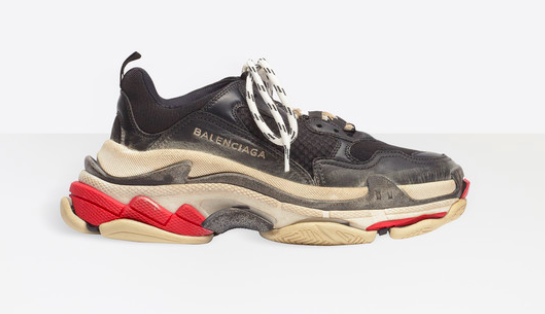
Consumers
Gucci, Louis Vuitton Streamlining Production To Keep Chinese Consumers
by
Meaghan Corzine | July 25, 2018
Some of the world's top fashion brands are outsourcing internal processes to China and other countries, but how will consumers react?
Ain’t nobody got time for that. That’s the message Chinese consumers are sending to luxury good manufacturers, and it seems it’s ringing loud and clear.
In order to meet demands in the country, brands like Gucci, Prada, Louis Vuitton and Burberry are brainstorming efforts to expedite their internal processes so that they don’t get left behind.
Made In…
It seems that high-end fashion labels are warming up to the idea of outsourcing becoming a necessity that doesn’t necessarily mean sacrificing brand DNA. While a few decades ago, designers and consumers may have gawked at luxury European brands being produced outside their country of origin, things look different today, especially with production transparency more exposed than ever.
The Triple S sneaker by Balenciaga, originally produced in Italy, made headlines in 2017 for having a new “Made in China” mark inside the tongue. While the revelation sparked controversy among consumers, it also posed the question: does the country of origin really impact quality or is it just a facade?

Image credit: Balenciaga
Business of Korea notes that luxury labels have been outsourcing for years, but mostly in Eastern European countries. According to the site, brands like Louis Vuitton sometimes produce goods in countries like Romania, but are able to sport the “Made in Italy” tag because the final production process is carried out there. Due to higher demands for quick delivery, more brands may shift to on-site factories in China to meet consumer demands.
The Chinese Consumer
Keep in mind that Chinese consumers are a key demographic for companies like LVMH and Kering. Luxury goods purchased in China make up 8 percent of the global total, according to Reuters. Shoppers in the country are often more willing to spend, but only on their terms—and that includes speedy delivery and low wait times.
Gucci is planning on bringing more in-house manufacturing and cutting down on independent leather good suppliers to boost activity. Its goal? To decrease the time by 50 percent between a luxury product’s conception and its delivery.
“We want to reduce the lead time, and it's not possible if you're too scattered with small suppliers," Gucci Chief Executive Marco Bizzarri told reporters earlier this month.
To get there, Gucci has either bought out or has plans to buy out 20 local suppliers to help create joint ventures with the manufacturing process.
Quality Concerns

Image credit: Prada
Italian-based brands like Prada are also grappling with what to do. Like many luxury brands, Prada has quality concerns when it comes to streamlining production.
"One of the problems with outsourcing is quality. You need artisans... and the problem with craftsmanship is one of training; you can't find these kind of people everywhere," Prada chairman Carlo Mazzi said.
It goes without saying that customers are not willing to sacrifice quality for diminished production-to-delivery times, and luxury labels are paying close attention to this.
In some ways, Gucci is just now jumping on the bandwagon of other fashion powerhouses.
Join Luxury Society to have more articles like this delivered directly to your inbox
E-Commerce Expansion
Britain’s Burberry and France’s Louis Vuitton have both began to gain control over their production processes to offset the rebound in sales, according to Reuters.
Earlier this month, Louis Vuitton expanded its e-commerce services to all major cities through China. For the Chinese consumer this could be paramount considering even China’s smaller cities will now have access to premium delivery service and a 7-day return policy.
However, the independent e-commerce sites of major luxury brands in China are supported by Chinese delivery service SF express and while they can get products to your doorstep in a matter of days, they’re faced with competitor JD.com’s promise of 90-minute delivery. This has prompted more and more brands to emphasize not only the importance of delivery times, but also the need to stock inventory on such e-commerce sites.
As time progresses, it will be interesting to see if Chinese consumers place their importance more on the perceived quality of luxury goods, or on direct access to products.
Cover image credit: Gucci

